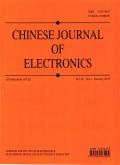Dynamic Sitting Posture Recognition System Using Passive RFID Tags in Internet of Things
IF 3
4区 计算机科学
Q3 ENGINEERING, ELECTRICAL & ELECTRONIC
引用次数: 0
Abstract
The rapidly developing Internet of things technology is gradually being utilized to monitor people's unhealthy behaviors. Sedentary behavior and wrong sitting posture are common health issues that can detrimentally impact the physical and psychological health of teenagers. An effective way to promptly rectify improper sitting postures among teenagers is to use equipment to monitor and recognize the alterations of sitting posture. The majority of conventional sitting posture recognition methods rely on cameras or sensors to recognize sitting posture. The employment of cameras will violate user's privacy, and the utilization of sensors will increase the cost of implementation. A dynamic sitting posture recognition system based on commodity off-the-shelf (COTS) radio frequency identification (RFID) devices is proposed. This system can recognize six common erroneous sitting postures by simply sticking five passive RFID tags on the user's back. We collect phase and received signal strength indicator (RSSI) data of passive RFID tags, then transform them into Doppler shift and RSSI difference data respectively, and finally input them into the established deep residual neural network for the classification of sitting postures. The experiment results show that our system achieves an average recognition accuracy of 99.17% with six sitting postures and is highly robust to different users and different usage environments.基于被动RFID标签的物联网动态坐姿识别系统
快速发展的物联网技术正逐渐被用于监测人们的不健康行为。久坐行为和错误的坐姿是常见的健康问题,会对青少年的身心健康产生不利影响。及时纠正青少年不当坐姿的有效方法是使用设备监测和识别坐姿的变化。传统的坐姿识别方法大多依靠摄像头或传感器来识别坐姿。摄像头的使用会侵犯用户的隐私,而传感器的使用会增加实现成本。提出了一种基于商品现货(COTS)射频识别(RFID)器件的动态坐姿识别系统。该系统可以识别六种常见的错误坐姿,只需在用户背上贴上五个无源RFID标签。我们采集无源RFID标签的相位和接收信号强度指标(RSSI)数据,将其分别转化为多普勒频移和RSSI差值数据,最后输入到所建立的深度残差神经网络中进行坐姿分类。实验结果表明,该系统对6种坐姿的平均识别准确率达到99.17%,对不同用户和不同使用环境具有很强的鲁棒性。
本文章由计算机程序翻译,如有差异,请以英文原文为准。
求助全文
约1分钟内获得全文
求助全文
来源期刊

Chinese Journal of Electronics
工程技术-工程:电子与电气
CiteScore
3.70
自引率
16.70%
发文量
342
审稿时长
12.0 months
期刊介绍:
CJE focuses on the emerging fields of electronics, publishing innovative and transformative research papers. Most of the papers published in CJE are from universities and research institutes, presenting their innovative research results. Both theoretical and practical contributions are encouraged, and original research papers reporting novel solutions to the hot topics in electronics are strongly recommended.
 求助内容:
求助内容: 应助结果提醒方式:
应助结果提醒方式:


